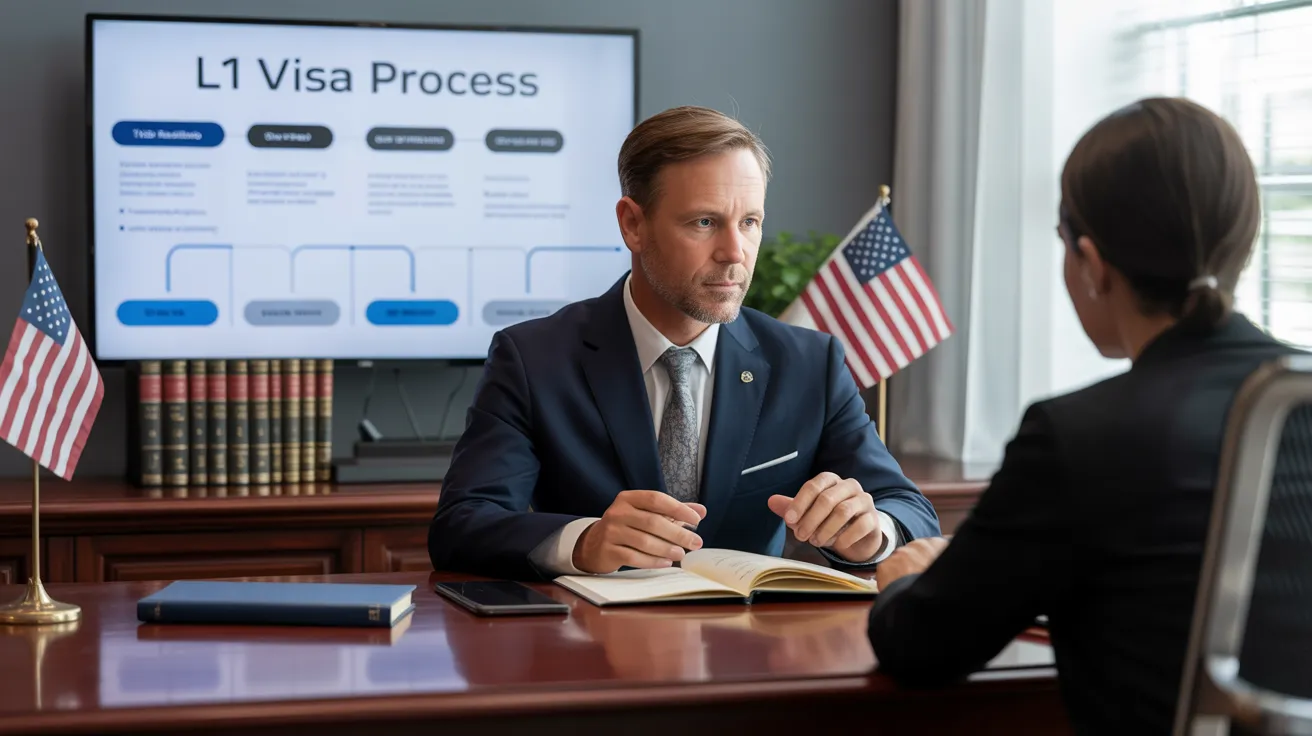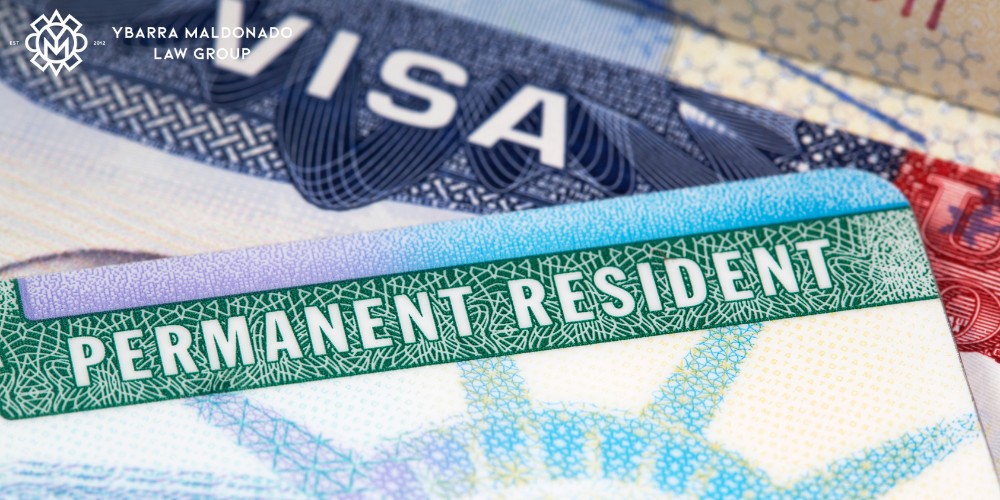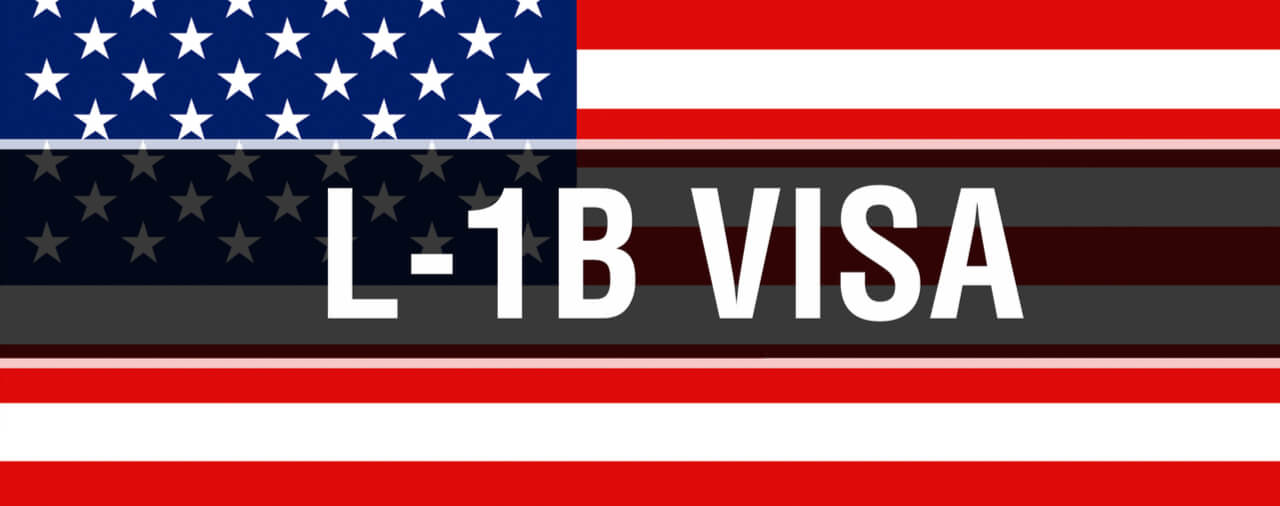L1 Visa Attorney Support
Unlocking Opportunities: A Comprehensive Guide to the L1 Visa Process
The L1 visa procedure presents an important path for international business looking for to move crucial employees across borders. Comprehending the nuances of eligibility criteria, the differences between L-1A and L-1B visas, and the intricacies of the application process can greatly impact a candidate's success. Maneuvering this facility landscape is not without its challenges, and mindful interest to documents and company sponsorship is necessary. As we explore the key components of this process, the approaches for overcoming potential obstacles will become evident, exposing just how notified prep work can open a globe of possibilities.
Comprehending the L1 Visa
Understanding the L1 visa requires identifying its relevance as a crucial tool for international firms seeking to move experienced staff members between worldwide offices. This non-immigrant visa classification promotes the movement of executives, supervisors, and specialized expertise employees to the USA, consequently enabling companies to preserve functional continuity and harness global skill successfully. The L1 visa is split into two key classifications: L-1A for managers and execs, and L-1B for employees having specialized knowledge.The L1 visa offers an essential function in boosting a firm's competitive edge in the worldwide marketplace - L1 Visa Requirements. By permitting companies to transfer their essential personnel, businesses can guarantee that crucial tasks are managed by certified individuals that are already familiar with the firm's culture and functional procedures. This internal transfer system not only promotes expertise sharing but also advertises development and partnership across borders.Moreover, the L1 visa is frequently favored for its reasonably simple application procedure compared to other visa classifications, as it allows for dual intent, permitting holders to pursue permanent residency while on a temporary copyright. This attribute makes the L1 visa specifically appealing for both companies and staff members, as it improves the pathway for knowledgeable experts to establish long-lasting residency in the USA
Qualification Requirements
Qualification for the L1 visa depends upon numerous crucial criteria that ensure both the employee and the company satisfy particular qualifications. This non-immigrant visa is created for international firms to transfer staff members from consular services to U.S. counterparts.Firstly, the company has to be a qualifying organization, which consists of a parent company, branch, affiliate, or subsidiary of a united state company. The firm should have been doing organization for a minimum of one year both in the united state and abroad. This ensures that the business has adequate functional stability and a genuine presence.Secondly, the employee should hold a supervisory, executive, or specialized understanding position. For L1A visas, the applicant must demonstrate supervisory or executive qualifications, while L1B visas concentrate on specialized expertise pertaining to the company's items, services, or processes. Furthermore, the employee needs to have helped the foreign entity for at the very least one continual year within the last three years prior to their application.Lastly, the staff member's role in the U.S. need to straighten with their previous setting, making certain that their skills and competence are leveraged for the business's benefit.
Sorts Of L1 Visas
The L1 visa category makes up 2 primary types made to promote the transfer of staff members within multinational companies: the L1A visa for managers and executives, and the L1B visa for staff members with specialized understanding. Each type offers unique objectives and has details qualification criteria.The L1A visa is customized for individuals who hold managerial or executive settings within a business. This visa makes it possible for top-level employees to move to a united state branch, subsidiary, or affiliate of the same organization. Applicants for the L1A visa should show that they have actually been used in a managerial or executive capability for at the very least one continual year within the previous 3 years before their application. Furthermore, this visa provides a longer period of keep, originally given for 3 years, with the opportunity of extensions for up to seven years.In contrast, the L1B visa is planned for specialists with specialized expertise related to the company's products, services, or processes. To qualify, candidates should confirm that their knowledge is vital to the company which they have benefited at the very least one continuous year within the last 3 years in a function that required this specialized understanding. The L1B visa is originally provided for 3 years, with extensions readily available for approximately 5 years.Both visa kinds are necessary for firms looking for to improve their international operations by leveraging skilled personnel, therefore promoting advancement and efficiency within the U.S. market.
Application Process
Guiding with the L1 visa process entails a number of vital steps that have to be thoroughly complied with to ensure a successful end result. The process begins with the U.S. employer, who should first develop qualification by showing a qualifying relationship with the international entity and confirming that the employee fulfills the details needs for the L1 visa group being sought.Once qualification is confirmed, the employer launches the procedure by submitting Kind I-129, the Request for a Nonimmigrant Worker, with the United State Citizenship and Migration Solutions (USCIS) This form needs to be accompanied by a thorough description of the job responsibilities to be carried out, the business structure of both the united state and international entities, and the staff member's credentials. It's crucial to verify that all details is precise and full, as noninclusions or mistakes can cause hold-ups or denials.Upon approval of the I-129 petition, the following step entails the worker looking for the L1 visa at an U.S. consular office or consular office in their home country. This stage calls for the completion of Kind DS-160, the Online Nonimmigrant Visa, and arranging a meeting. Throughout the interview, the applicant should present proof sustaining their credentials and the company's petition.After the visa is approved, the worker can enter the United States to operate in the marked function. In general, cautious prep work and adherence to every action of the application process are vital for a successful L1 visa result.
Needed Documents

Vital Forms Required
Maneuvering the L1 Visa procedure requires careful attention to the vital kinds and documentation required for an effective application. The main type needed is the Form I-129, Request for a Nonimmigrant Worker, which have to be finished and submitted by the united state company. This kind describes the information of the work offer and the certifications of the staff member seeking the L1 Visa.Alongside Form I-129, the applicant will certainly need to full Form I-539 if coming with member of the family are likewise looking for visas. Additionally, the company should provide evidence of the certifying partnership between the U.S. entity and the foreign entity, frequently demanding the submission of business documents such as write-ups of incorporation or monetary statements.Moreover, it is essential to consist of the L Category Supplement to Kind I-129, which specifies the type of L Visa being requested-- either L-1A for managers and execs or L-1B for employees with specialized knowledge. Lastly, applicants ought to assure that all kinds are authorized and dated properly, as insufficient submissions can lead to hold-ups or denials. Properly assembling these important forms lays the foundation for a smoother L1 Visa procedure.

Supporting Evidence Needs
Supporting paperwork is vital for an effective L1 Visa, as it substantiates the insurance claims made in the request. Applicants must provide a variety of documents to show eligibility for the visa, which is classified into 2 key types: evidence of the certifying relationship in between the united state and international entities and evidence of the candidate's qualifications.To establish the relationship, applicants should submit documentation such as corporate organizational charts, economic statements, and proof of possession. These documents verify that the international company has a certifying connection with the U.S. company, whether as a moms and dad firm, subsidiary, branch, or affiliate.For the candidate's qualifications, crucial records consist of a detailed employment letter from the foreign employer, describing the candidate's work title, tasks, and period of work. Furthermore, academic credentials, such as levels and diplomas, ought to be supplied to verify the candidate's expertise in the appropriate field.
Employer Sponsorship Files

Common Obstacles
Maneuvering the L1 visa procedure offers numerous usual difficulties that applicants ought to be aware of. Key concerns often consist of strict documentation demands, prospective delays in handling times, and the necessity for strict lawful conformity. Understanding these barriers can aid applicants much better prepare and reduce threats during their visa trip.
Documents Demands
The L1 visa procedure typically provides significant difficulties related to documentation needs. Candidates should provide extensive documentation to establish eligibility, which can result in confusion and prospective delays. Trick documents include proof of a certifying partnership between the U.S. and international company, proof of the candidate's employment background, and comprehensive info regarding the work duty in the U.S.One usual challenge is collecting sufficient evidence to show the nature of the qualifying partnership. Firms usually have a hard time to existing clear business charts or economic statements that illustrate the connection between the entities. On top of that, making certain that letters of support from companies properly show the applicant's job responsibilities and qualifications is vital, as obscure summaries can lead to denials.Another concern occurs from the requirement for detailed job summaries that align with the L1 visa classifications. Applicants have to verbalize not just their present function but likewise their managerial or specialized expertise obligations clearly. This demands a thorough understanding of both the applicant's position and the governing language used in L1 visa.
Processing Time Hold-ups
Experiencing delays in processing times is an usual obstacle faced by L1 visa candidates, typically leading to stress and uncertainty. A number of elements add to these hold-ups, including high application quantities, boosted scrutiny of applications, and management stockpiles within the U.S. Citizenship and Immigration Services (USCIS) Applicants might discover that handling times can differ considerably depending on the service center handling their application, as each facility has its very own workload and performance degrees. Additionally, the complexity of the applicant's case, such as the demand for comprehensive paperwork or information, can even more expand wait times.In some instances, concerns associated with the applicant's present migration condition or previous visa background may additionally result in added delays, as USCIS might call for further testimonial or details. It is crucial for candidates to continue to be proactive throughout this period, maintaining open communication with their companies and legal agents to resolve any possible concerns promptly.Understanding these handling time obstacles can assist L1 visa applicants prepare for possible hold-ups and mitigate the influence on their change and occupation strategies. Patience and persistance are crucial merits in steering this detailed process.
Lawful Compliance Issues
Numerous L1 visa applicants come across lawful conformity issues that can complicate their journey toward getting the visa. Recognizing and sticking to the details laws established by the united state Citizenship and Migration Solutions (USCIS) is important. Typical difficulties include showing the qualifying relationship in between the international and U.S. employers, as well as confirming that the applicant possesses the requisite customized knowledge or managerial capacity.Additionally, applicants must provide thorough paperwork outlining their job duties, corporate structure, and financial feasibility of the U.S. entity. Insufficient or incorrect documentation can lead to delays or even rejections. Companies must also guarantee that they follow labor laws, consisting of wage and functioning condition standards, which can impact visa eligibility.Another common concern includes keeping compliance with the regards to the visa when approved. Adjustments in employment status, job obligations, or company structure can necessitate modifications to the visa, which if not addressed without delay can cause legal complications. Consequently, remaining educated concerning conformity needs and seeking legal advice when essential is essential to navigate the complexities of the L1 visa procedure efficiently.
Tips for Success
Success in the L1 visa process typically rests on thorough prep work and interest to information. To enhance your chances of approval, start by thoroughly understanding the qualification requirements for both the L1A and L1B visa classifications. Review whether your setting at the business certifies as supervisory, exec, or specialized knowledge, as this classification significantly influences your application.Next, gather comprehensive documents that substantiates your cases. This consists of business charts, thorough job summaries, and proof of the business's functional framework. Clear and succinct proof of the certifying connection in between the united state entity and the international entity is crucial. Confirm that all documents are organized realistically and presented in a specialist manner, as this reflects your commitment and severity regarding the application.Engage the solutions of a seasoned migration lawyer who concentrates on L1 visas. Their experience can verify indispensable, assisting you through complicated laws and ensuring that all documents adheres to present laws. Additionally, get ready for the meeting by exercising response to typical concerns and being prepared to review your duty and payments to the firm extensive.
Often Asked Questions
Can Household Members Come With the L1 Visa Owner?
Yes, member of the family of L1 visa holders, consisting of spouses and unmarried children under 21, can accompany the primary visa holder. They might also request L2 visas, which permit them to reside in the United States.
Exactly How Lengthy Can I Remain on an L1 Visa?
The L1 visa enables initial stays of approximately three years, with the opportunity of extension. L1A visa owners might stay for an optimum of seven years, while L1B visa owners can stay for five years.
Can L1 Visa Holders Use for an Environment-friendly Card?
Yes, L1 visa holders can obtain a permit. L1 Visa. They may seek long-term residency through employment-based groups, normally calling for sponsorship from their employer, supplied they satisfy the necessary credentials and paperwork requirements
What Occurs if My L1 Visa Is Rejected?
If your L1 visa is denied, you might get a notification detailing the reasons for denial. You can look for to appeal the decision, reapply, or discover alternative visa choices based on your scenarios.
Are There Any Kind Of Traveling Limitations With an L1 Visa?
An L1 visa usually enables global traveling; nevertheless, re-entry to the U. L1 Visa.S. rests upon preserving valid status. Vacationers should assure conformity with visa problems to avoid complications upon return
Verdict
